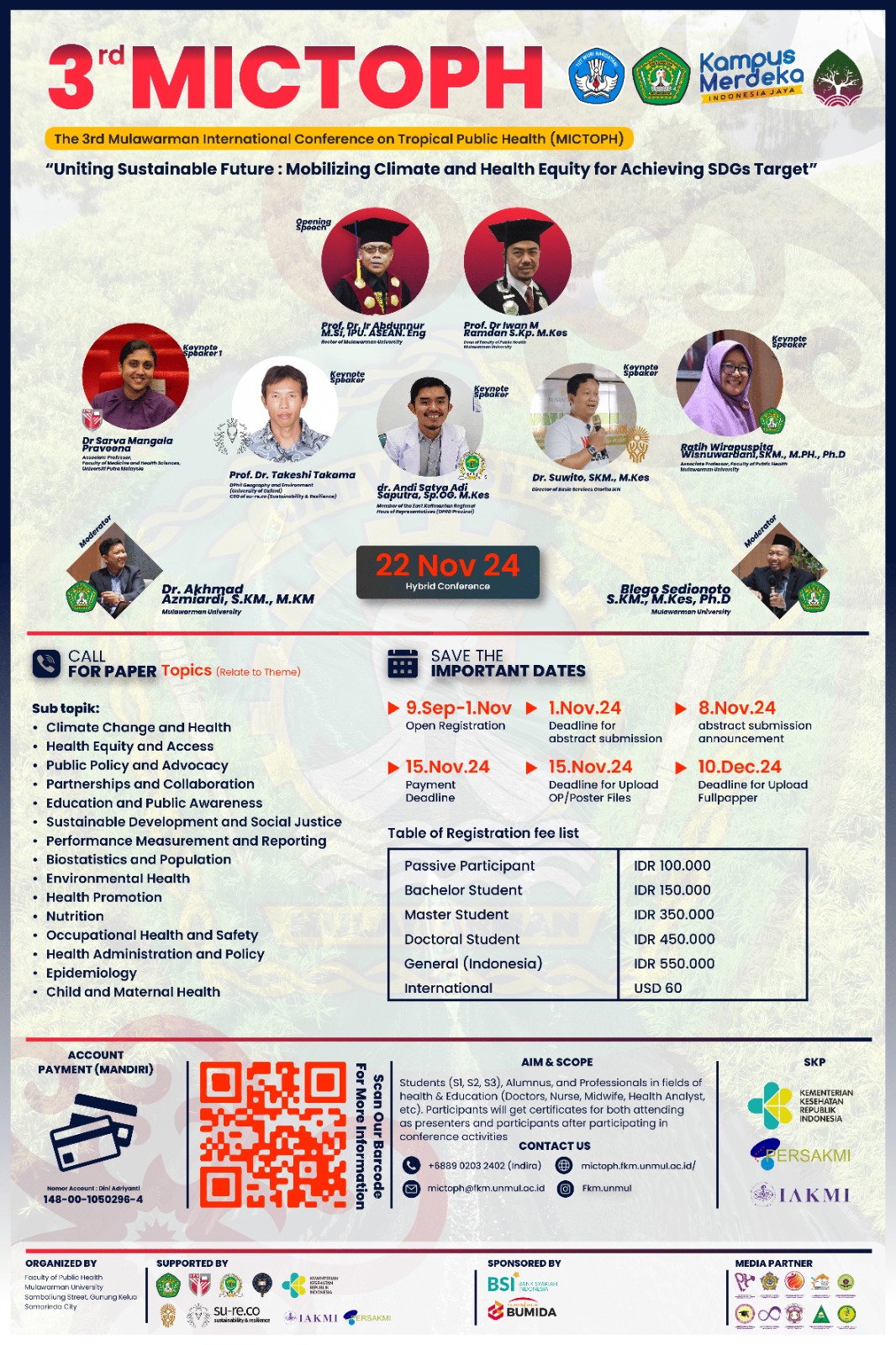Identification of Microplastics at Drinking Water Refill Station in Tilamuta District
Keywords:
microplastics, drinking water, refill stationAbstract
Background : Microplastics (MPs) are now everywhere in terrestrial, freshwater, and marine environments. Recently, the presence of microplastics has been found in human feces samples. It is suspected that it comes from the digestive tract with drinking water being considered as one of the entry media. Objective : This study aims to determine the microplastics content in refilled drinking water, both in raw water and in processed water. Research Methods/ Implementation Methods : This study is an observational study. Samples came from 15 Drinking Water Refill Stations in Tilamuta District with various processing techniques. Microplastic measurements were carried out on raw water and processed water samples based on type, size, and abundance. Results : After identification, there were 5 stations whose water samples tested positive for microplastics contamination. Consisting of 3 stations whose microplastics were found in raw water samples and processed water samples, while 2 stations whose microplastics were found only in processed water samples. The identified microplastics consisted of two types, namely the line type with a black color and the film type with a clear color. The sizes found in raw water samples ranged from 0.269 mm to 0.505 mm with an average abundance of 10 Items/L, while those found in processed water samples ranged from 0.122 mm to 0.557 mm with an average abundance of 14 Items/L. Conclusion/Lesson Learned : To prevent microplastic contamination, it is recommended to carry out strict monitoring of water quality, improve processing processes, increase hygiene and sanitation standards, routine maintenance of equipment, consumer education, and collaboration with authorities to ensure compliance with applicable standards.





